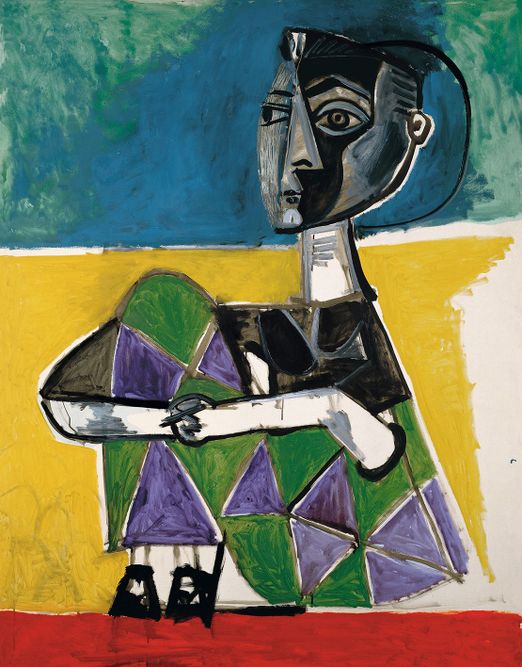
On view
Jacqueline Seated
Paris, October 8, 1954
Oil on canvas
146 x 114 cm
Museo Picasso Málaga. Gift of Christine Ruiz-Picasso. MPM1.9
Unlike the painters known as ‘Orientalists’ who sought out supposedly exotic settings, Picasso, who had been born in the south of Europe, turned light into a major protagonist in his work. When the artist decided to locate his studio and home in a property set among pine trees and bathed by the light of the Côte d’Azur, his paintings and ceramics turned more joyful and his symbolic fields became populated with fauns, nymphs and satyrs who appear to be listening with a smile to the old tales told by the sailors of ancient times on their return from voyages around the classical isles.
‘“For me the role of painting”, says Picasso, “is not to depict movement, to show reality in movement. Its role, for me, is rather to halt movement. You must go further than movement in order to halt an image. Otherwise you’re chasing after it. For me, only at that moment is there reality.”’
[Hélène Parmelin, Picasso says… London, George Allen and Unwin, 1969, p. 39]

Learn more
What was happening in 1954?
- Picasso paints portraits of Jacqueline Roque, who will become his second wife in 1961
- The painters André Derain, Henri Matisse and Frida Kahlo die
- France recognises Vietnamese independence
- The US Navy launches the Nautilus, the first nuclear-powered submarine



